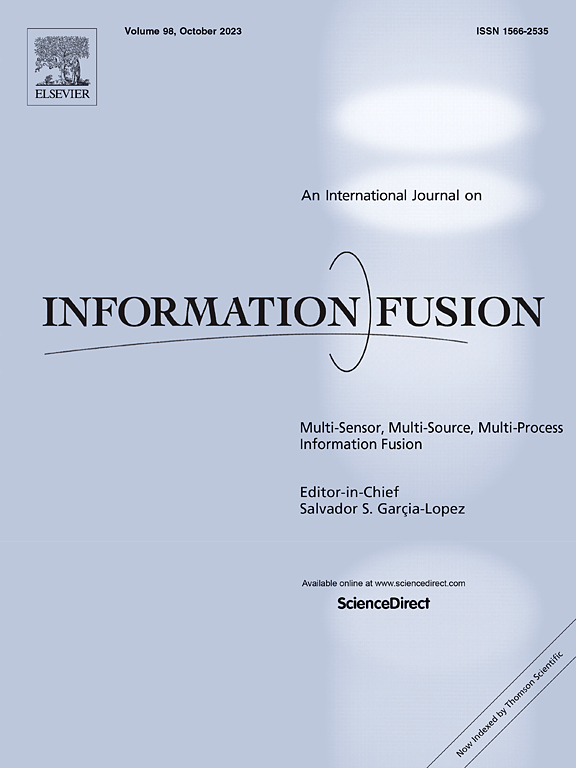Uncertain multi-conceptual information acquisition and fusion for hierarchical classification
IF 15.5
1区 计算机科学
Q1 COMPUTER SCIENCE, ARTIFICIAL INTELLIGENCE
引用次数: 0
Abstract
Recently, hierarchical classification has become a hot research problem due to the wide existence of hierarchically structured data in the real world. However, some existing studies on hierarchical classification proposed a series of feature selection methods without considering the design of a stopping mechanism, while others designed the stopping mechanism without taking the feature selection into account. Despite the simplicity of integrating the above two parts, they are usually not compatible with each other, which lead to reduced performance of hierarchical classification models. In this work, we obtain a novel hierarchical classifier by constructing a hierarchical fuzzy concept-cognitive learning model (HFCCLM), in which incremental hierarchical feature selection is realized by the update of inclusion degree of fuzzy concepts, and a stopping mechanism is designed by learning uncertainties of samples matching nodes in a hierarchical tree structure. That is, feature selection and design of a stopping mechanism can be unified in the fuzzy concept-cognitive learning framework. Furthermore, by integrating the uncertainties of set approximation of clue based fuzzy reasoning and clue based fuzzy concept-cognitive learning for stopping samples at appropriate nodes, it significantly enhances the performance of the proposed hierarchical classifier. Finally, experiments are carried out to show the effectiveness of our model in achieving hierarchical classification tasks.
层次分类的不确定多概念信息获取与融合
由于现实世界中广泛存在层次结构的数据,分层分类成为近年来研究的热点问题。然而,现有的一些分层分类研究提出了一系列特征选择方法,但没有考虑停止机制的设计,而另一些研究则在设计停止机制时没有考虑特征选择。尽管将以上两部分整合起来很简单,但它们通常不兼容,这导致了分层分类模型的性能下降。本文通过构建层次模糊概念认知学习模型(hfclm)获得一种新的层次分类器,该模型通过更新模糊概念的包含度来实现增量的层次特征选择,并通过学习层次树结构中样本匹配节点的不确定性来设计停止机制。即特征选择和停止机制的设计可以统一在模糊概念-认知学习框架中。此外,通过整合基于线索的模糊推理和基于线索的模糊概念认知学习的集合逼近的不确定性,在适当的节点停止样本,显著提高了所提出的层次分类器的性能。最后,通过实验验证了该模型在实现分层分类任务方面的有效性。
本文章由计算机程序翻译,如有差异,请以英文原文为准。
求助全文
约1分钟内获得全文
求助全文
来源期刊

Information Fusion
工程技术-计算机:理论方法
CiteScore
33.20
自引率
4.30%
发文量
161
审稿时长
7.9 months
期刊介绍:
Information Fusion serves as a central platform for showcasing advancements in multi-sensor, multi-source, multi-process information fusion, fostering collaboration among diverse disciplines driving its progress. It is the leading outlet for sharing research and development in this field, focusing on architectures, algorithms, and applications. Papers dealing with fundamental theoretical analyses as well as those demonstrating their application to real-world problems will be welcome.
 求助内容:
求助内容: 应助结果提醒方式:
应助结果提醒方式:


